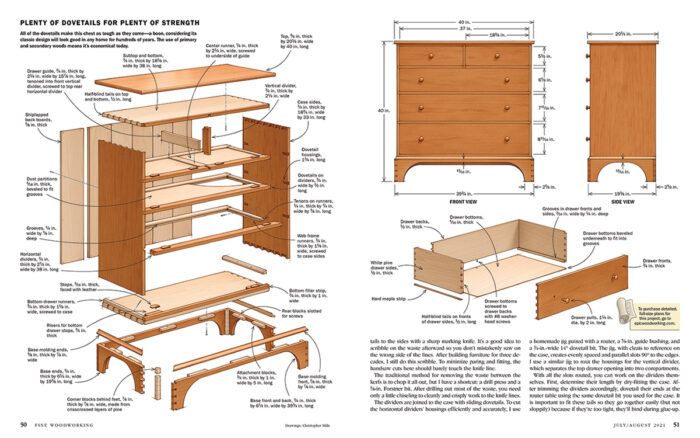I’ve been a longtime reader of Fine Woodworking and I am extremely grateful to the many talented woodworkers from whom I’ve learned almost everything I know about woodworking. Recently, I spent some time scrolling through an active discussion on Finewoodworking.com on the “ethics of copying.” At the root of the issue is the question of whether or not it is ethically or morally right to build someone else’s design. When I read your magazine and see an article about a build, I see it as an invitation to build, and I’ve developed lots of good skills from doing so. But I’m struck by the strongly held views of some that putting your work into Fine Woodworking is not permission for readers to go ahead and build it. I’m not sure what to think. What are the limits of the use of the information you publish? Can I build a featured project for myself? Do I need to contact the original builder for permission? Can I build one for a charity auction? Can I build one to sell? What principles should I use to guide my decisions when I’m considering copying the work of others?
—Gerry Giesbrecht, Calgary, Alta., Canada
Editor’s reply:
The short answer is that it’s fine to build a piece for yourself or family and friends based on a project published in the magazine. I feel that’s perfectly OK, even if you are being compensated (lumber isn’t cheap!). However, if you are embarking on a professional career, you should get permission from the author before replicating a specific piece of work.
For me, a bigger question to consider is why a woodworker would want to make an exact copy of someone else’s work. I think that this defeats the purpose of building handcrafted work, and more important, it misses an opportunity to invest your own creative vision into the work you make. Designing original work can be a big challenge. When you start woodworking, it’s a good idea to use an existing piece as a reference. But the more you build, the more you will begin to develop a library of techniques and design details from previous projects that you can draw from in future projects. In this way, you can chart a path from basing work on existing designs to building work that more closely reflects you as a maker. Just about everything I make now still owes its form to many pieces and influences that came before it. In the end, while building from an existing plan can be an instructive exercise, you’ll see greater rewards in the long run if you instead use it as a jumping-off point to an original design.
—Michael Pekovich
From Fine Woodworking #296








